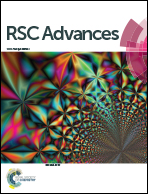Polyelectrolyte multilayers assembled from IL-10 plasmid DNA and TGF-β siRNA facilitate chronic pancreatitis treatment
Abstract
Chronic pancreatitis (CP) is a challenging disease characterized by the constant recurrence of inflammation, and is associated with pancreatic injury, necrosis and fibrosis. However, no effective therapies for treating CP exist so far. In this study, IL-10 plasmid DNA and TGF-β siRNA were employed to create polyelectrolyte multilayers (PEMs) for treating CP. The PEMs were assembled onto gold nanoparticles via layer-by-layer assembly. Characterization showed that the sizes of the nanoparticles were determined by the number of layers assembled on the particles. The surface charges of the nanoparticles were decided by the final layer of material deposited on the particles. Upon uptake, the nanoparticles allowed both the expression of exogenous pcDNA and siRNA-mediated gene knockdown. In vitro studies showed that the treatment can reduce the expression of mRNAs associated with inflammation and fibrosis (e.g., collagen 1A1 mRNA, fibronectin mRNA and IL-6 and IL-8 mRNA) in a CP model based on pancreatic stellate cells. In vivo studies showed that the co-delivery of these two therapeutic cargos can reduce inflammation and fibrosis in mice with CP. This study may provide a potential strategy for treating CP by co-delivering two anti-inflammatory and anti-fibrotic cargos together.


 Please wait while we load your content...
Please wait while we load your content...